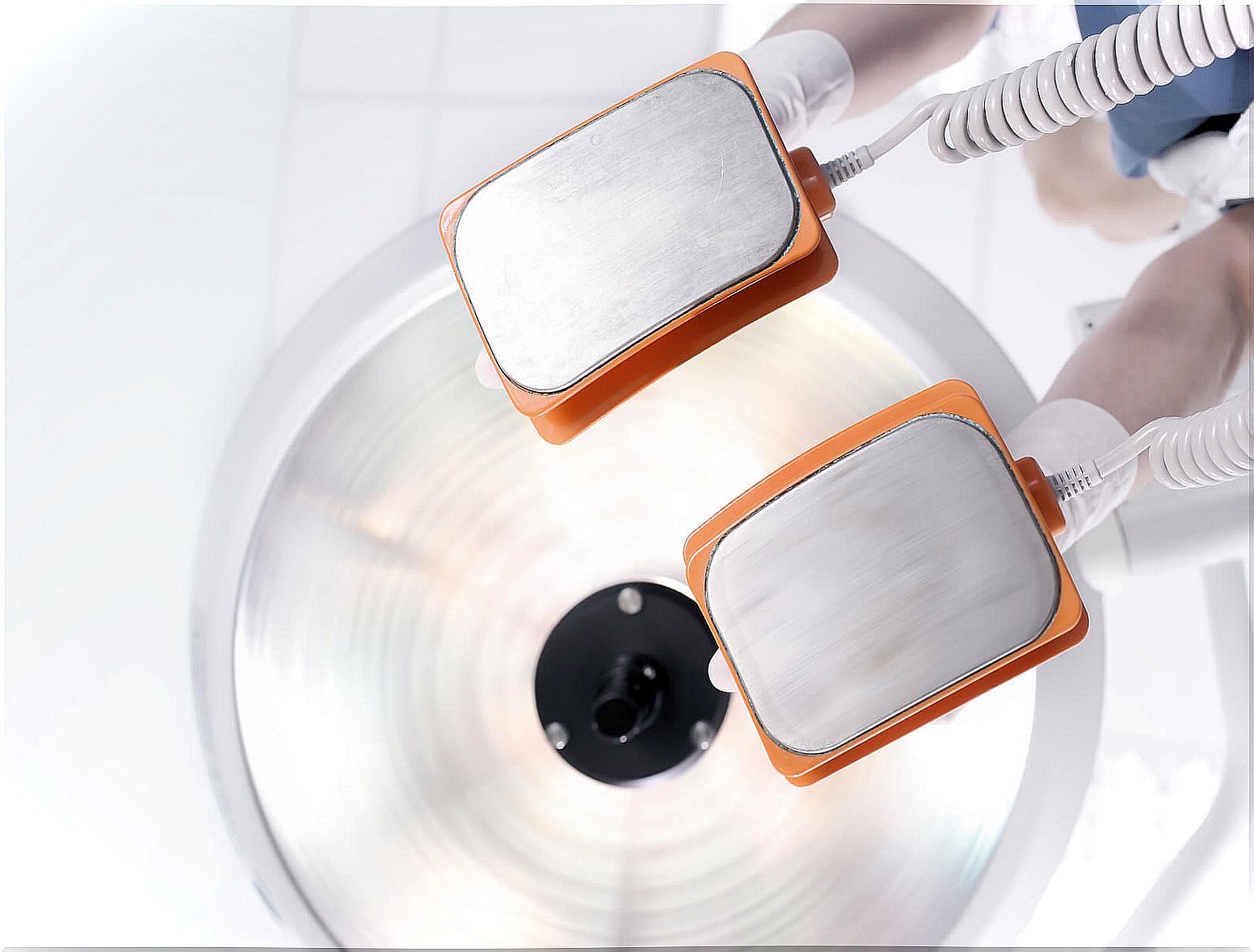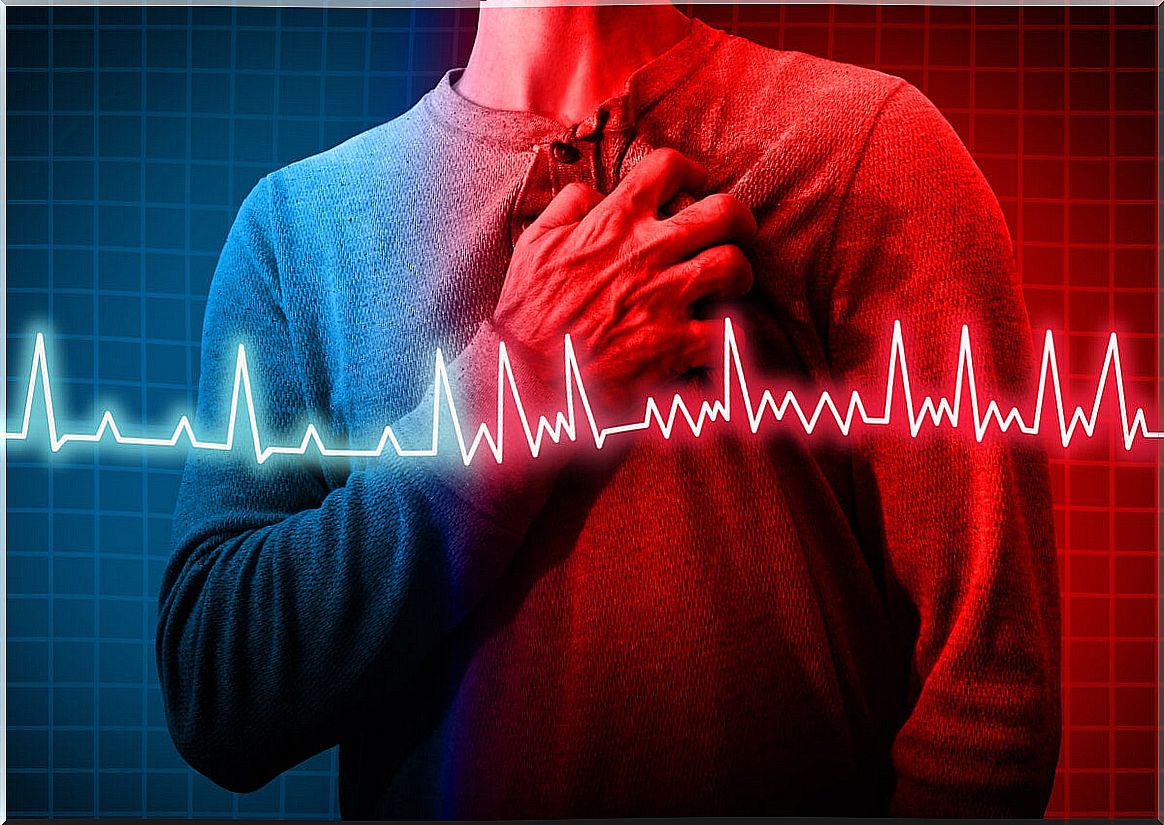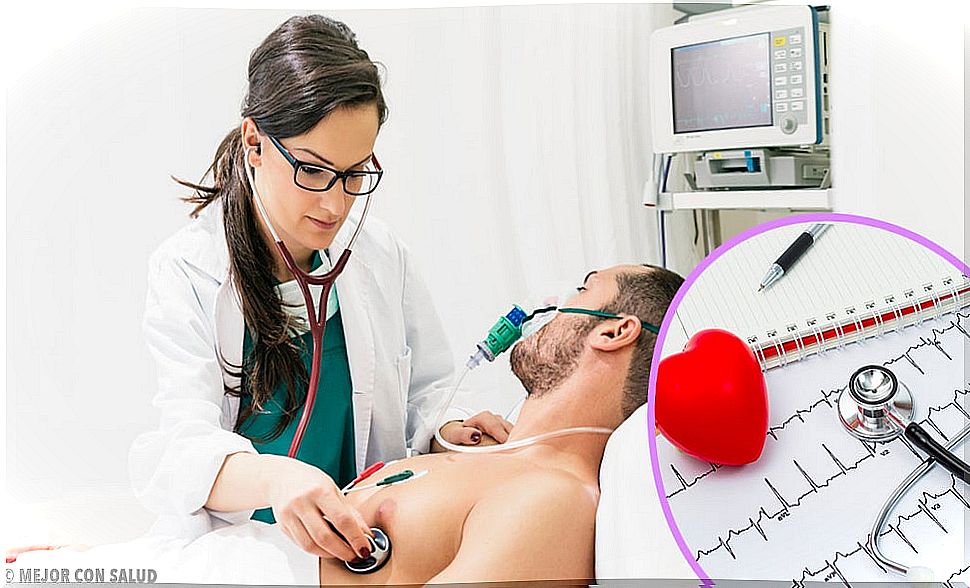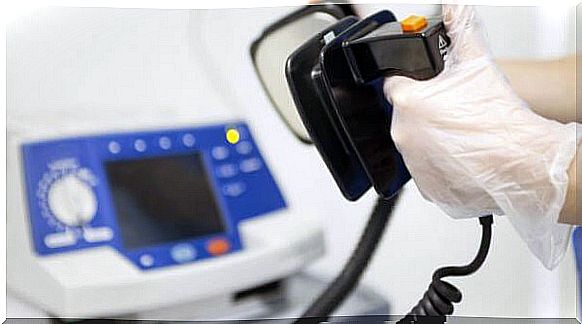What Is Cardioversion And Defibrillation?
Cardioversion and defibrillation are cardiac resynchronization techniques using voltage. They are used in the treatment of arrhythmias.

Cardioversion and defibrillation refer to two types of therapy in which a direct current electrical shock is used to reverse some heart rhythm disorders. Due to their effectiveness and ease of application, they represent one of the most important tools in all areas of healthcare.
Cardioversion is used to reverse all types of reentrant arrhythmias, except ventricular fibrillation. For its part, defibrillation is intended for cases of cardiorespiratory arrest, with the patient unconscious, presenting ventricular fibrillation or pulseless ventricular tachycardia.
What is the difference of each one? How should they be administered? To solve these questions, we want to dedicate a special space to the subject below. Do not miss the details!
Cardioversion and defibrillation: what do they consist of?

As a general rule, cardioversion is a medical term that refers to a technique within the treatment of arrhythmias. Likewise, arrhythmias are alterations in the patient’s normal heart rhythm. They are usually caused by complications in the electrical signals responsible for regulating the heartbeat.
Thus, they do not travel properly through the chambers of the heart. For example, it refers to disorders such as ventricular tachycardia, ventricular flutter, or atrial fibrillation.
In this way, cardioversion is able to restore normal heart rhythm in patients. It is a programmed intervention but can be used in emergency situations. On the other hand, within this method we can differentiate between two subtypes:
Electrical cardioversion
Generally, a device called a defibrillator is used to normalize the heart’s function. Likewise, we can differentiate between two subtypes of electrical cardioversion. They differ based on the characteristics of the defibrillator. Thus, the medical team must choose between:

External defibrillator
The electrical impulse or shock comes from a body foreign to the patient. They are the devices located both in hospitals and ambulances and in public places. The procedure to follow then consists of the following steps:
- Place the electrodes that accompany the defibrillator on the bare chest and on the back.
- Next, all the electrodes are connected to the defibrillator. At other times, the device does not have electrodes. They are replaced by paddles that would be placed on the patient’s chest.
- The device that sends an electrical shock to the heart is activated. In this way, the activity of the heart stops for a brief moment. However, this organ restarts its operation in a short period of time.
- Sometimes it is necessary to send a stronger electrical current or repeat the procedure.
Implantable cardioverter defibrillator (or ICD)
Furthermore, the defibrillator can be placed inside the patient. For this, it will be necessary to carry out a surgical intervention. In it, we can distinguish the following steps:
- Implantation of the device under the skin. It can be placed in the upper chest or even the abdomen.
- Later, the device is connected to the heart so that it can fulfill its goals.
- After surgery, the defibrillator can send an electrical signal to the heart in the event of a normal rhythm disturbance. In this way, the disorder would stabilize quickly.
Pharmacological cardioversion
In this case, medications are used to stabilize the movements of the heart. They can be administered both orally and intravenously. Typically, the procedure takes place in the hospital but can also be carried out at the subject’s home.

In this way, the medical team will monitor the evolution of the patient during treatment. The time for the compounds to take effect can vary from minutes to days. For example, drugs such as amiodarone, flecainide, or sotalol may be recommended.
However, it is necessary to distinguish between the concept of cardioversion and that of defibrillation. Cardioversion is used to treat arrhythmias.
On the other hand, defibrillation is carried out in extreme cases, where the patient suffers from cardiac arrest. The mechanism of action is similar to that of electrical cardioversion but the electrical shocks are usually more intense in the first case.
What are the possible risks?
On the other hand, the patient is exposed to a series of side effects in all medical tests. However, there are usually no complications in both cardioversion and defibrillation. Thus, among the risks of these procedures we can point out:
- Allergic reactions to the medicines used. Also called hypersensitivity to a compound. The symptoms that the patient presents may vary depending on the drug administered and the characteristics of the subject.
- Pain in the area where the electrodes were placed. Bruises and even burns may appear in the area.
- Worsening of the arrhythmia initially presented by the patient.
- Development of blood clots. These clots can travel through blood vessels to other regions of the body. In this way, a stroke or serious damage to other organs can occur. For example, it is the case of pulmonary embolism.
Cardioversion and defibrillation therapies must be administered by a trained professional. Likewise, the doctor must inform about their possible risks and the care after this.









